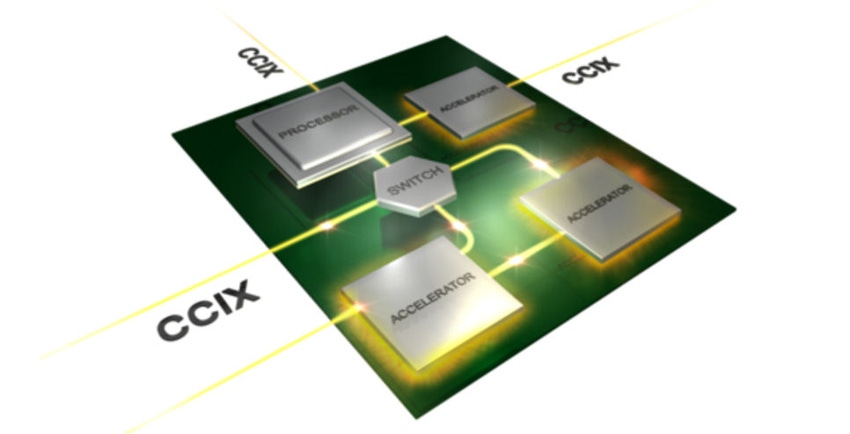A consortium of chip companies have got together to work on a new technology that is designed to enable chips of all kinds to work together efficiently, especially in data centres.
May 24, 2016

A consortium of chip companies have got together to work on a new technology that is designed to enable chips of all kinds to work together efficiently, especially in data centres.
The technology is called CCIX, which somehow stands for Cache Coherent Interconnect for Accelerators. It appears to be a way of letting processors using different instruction set architecture to coherently share data with each other. This, we’re told, will make heterogeneous computing – i.e. the pooling of computing resource between CPUs, GPUs, DSPs, etc – much more efficient, which will be especially handy in a data centre setting.
The full list of companies initially involved in CCIX is: AMD, ARM, Huawei, IBM, Mellanox, Qualcomm, and Xilinx. Mellanox is an interconnect specialist and Xilinx focuses on field-programmable chips (FPGAs), as did Altera when it was acquired by Intel for $16.7 billion. FPGAs are considered especially suited for embedded environments such as IoT.
“A ‘one size fits all architecture’ approach to data centre workloads does not deliver the required performance and efficiency,” said Lakshmi Mandyam, director server systems and ecosystems, ARM. “CCIX enables more optimized solutions by simplifying software development and deployment of applications that benefit from specialized processing and hardware off-load, delivering higher performance and value to data centre customers.”
“Qualcomm Technologies is excited about the development of a new technology enabling efficient, high-performance architectures in an open, ISA-agnostic platform,” said Vinay Ravuri, VP of product management at Qualcomm. “The data centre of the future demands open architectures enabling choice of compute, acceleration and interconnect technologies, and this is a significant step forward in delivering on that goal.”
An analysis published by Forbes identifies Intel, which is the leader in data centre chips, as the main competitive driver for this move. Intel could develop a distinct competitive advantage in data centres and IoT if it’s able to position a single, unified solution against the disparate offerings from the ARM ecosystem, AMD and IBM.
About the Author(s)
You May Also Like








.png?width=300&auto=webp&quality=80&disable=upscale)


_1.jpg?width=300&auto=webp&quality=80&disable=upscale)


.png?width=800&auto=webp&quality=80&disable=upscale)